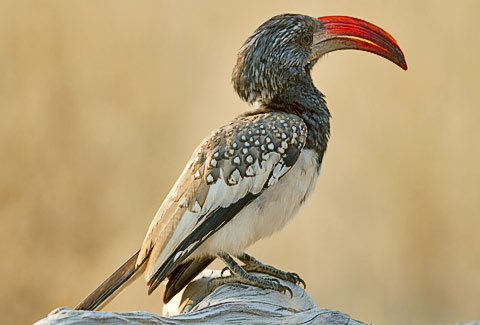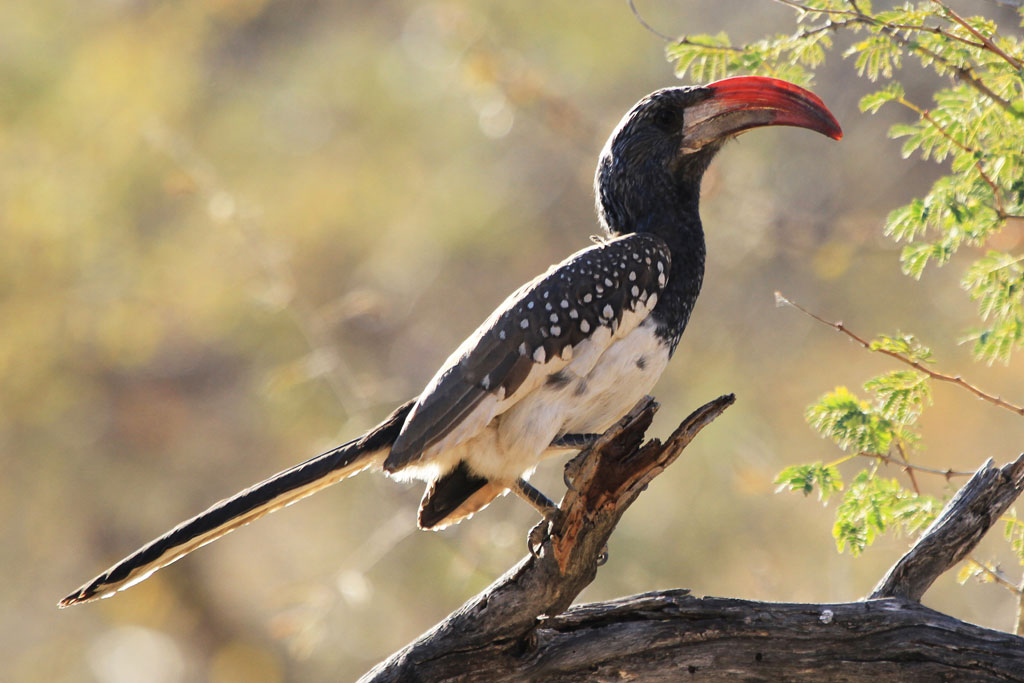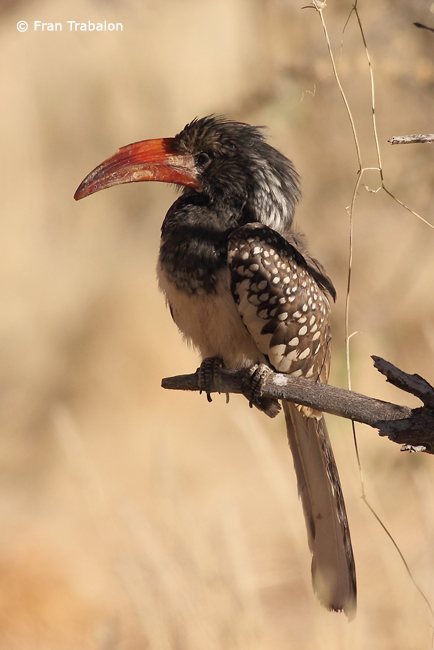
Tockus monteiri
SUBFAMILY
Bucerotinae
TAXONOMY
Tockus monteiri Hartlaub, 1865, Benjuela, Angola. Monotypic.
OTHER COMMON NAMES
French: Calao de Monteiro; German: Monteirotoko; Spanish:
Toco Angoleсo.
PHYSICAL CHARACTERISTICS
19.7 in (50 cm); female 0.59–0.93 lb (269–423 g), male averages
0.81 lb (370 g). Small, brown-and-white with white spotted
wings and large, dark red bill.
DISTRIBUTION
Southwestern Angola and northwestern and central Namibia.
HABITAT
Dry scrub and thornbush, generally the driest habitat of any
hornbill.
BEHAVIOR
Territorial, semi-terrestrial, highly vocal birds. Sometimes bob
up and down when calling; during territorial displays bow the
head, hunch the wings, and cluck.
FEEDING ECOLOGY AND DIET
Forages mainly on the ground, consuming primarily insects.
REPRODUCTIVE BIOLOGY
Usually nests in rock faces near water. Lays two to eight eggs
generally after a period of rain. Incubation 24–27 days; fledging
c. 45 days.
CONSERVATION STATUS
Not threatened. Common and widespread within its limited
range.
SIGNIFICANCE TO HUMANS
Excellent species for research because of its open habitat and
willingness to nest in artificial nest boxes.
Other popular Animals
Photo Gallery of - Monteiro’s hornbill




 Animalia Life
Animalia Life